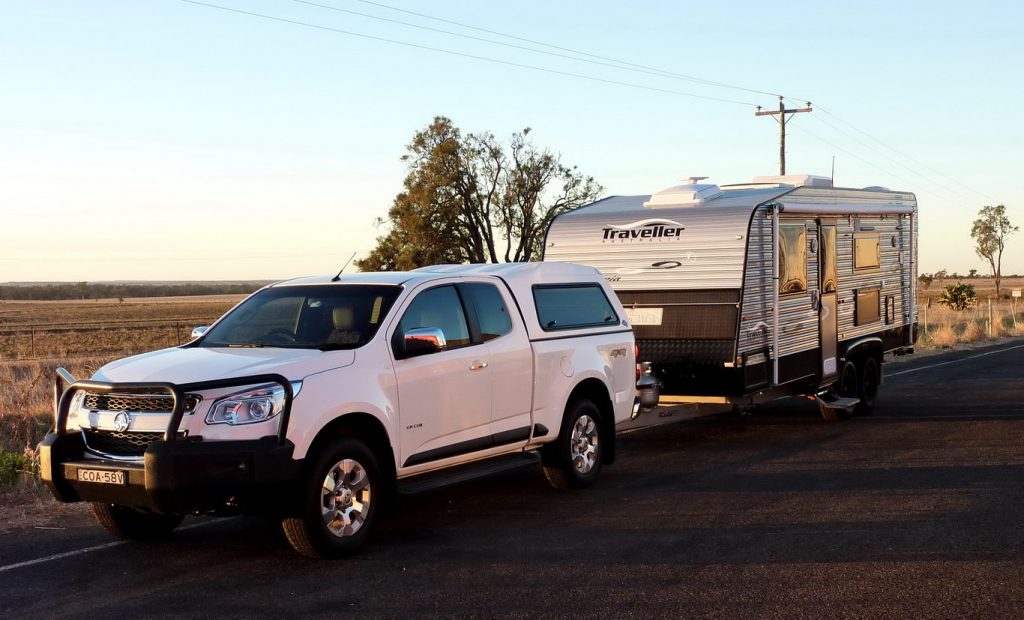

Living in South-East Queensland we have the best of both worlds, from our picturesque beaches to our spectacular hinterlands. Whether you’re planning to get away for a long weekend or a more extended stay. Before hitting the road, follow our simple and easy to follow pre trip checklist to get to your destination safely. If its your first time towing, be sure to check out our caravan towing for beginners.
Towing vehicle
-
The first thing to do before heading out on a trip is to make sure the tow vehicle is up to the task and not going to break down. It is worthwhile to have the vehicle serviced, don’t forget that towing places additional strain on the tow vehicle.
-
Make sure that your vehicle is suitable for towing your particular load. Check your vehicle load limits, remember to take into account the payload of the caravan as well.
-
Check that your tyres are inflated to the correct pressure and still have plenty of tread remaining. If you are unsure about what pressure you should have in your tyres, contact your local tyre centre. Remember to check that you have your spare tyre and that it is inflated.
-
Try and limit the amount of items stored in the rear compartment / boot of the tow vehicle.
Caravan / Trailer Checks
TRAILER COUPLING – Check that the coupling socket and tow ball are the matching size. When the caravan / trailer is attached to the tow vehicle ensure that the coupling is firmly latched or screwed down.
SAFETY CHAINS – Check that the safety chains are free from damage and properly fixed to the drawbar. When fixing the safety chain to the tow vehicle ensure that your D Shackles have the sufficient strength to hold the ball weight. Never use padlocks for this process. When two chains are fitted to your drawbar, it’s recommended that you cross them over underneath the drawbar before attaching to the tow vehicle. This will provide better directional control of the trailer and prevent the drawbar from hitting the road if the coupling disconnects.
STABILISERS – Lock the front and rear stabilisers in the fully raised position. Store the winder in an easy accessible place, it’ll be one of the first items you need when you stop.
JOCKEY WHEEL – Don’t forget your jockey wheel. If on a swivel mount make sure the pins have located into the holes and the wheel is locked into place. If not on a swivel make sure that it is store in an easy accessible place (with your stabiliser winder would be a smart choice).
LIGHTS – Check the plug and socket are free from dirt and water before connecting. Make sure all the lights are working and covers aren’t damaged. This includes brakes, indicators, reverse, side lights and number plate. You can check most of these yourself but you’ll need an extra person for the rest. It’s a good idea to carry some spare globes (especially brakes and indicators).
BRAKES – Make sure your brakes engage and release. This can be done by simply driving around the block and performing some slow speed brake test to see if they are functioning properly.
MIRRORS – Tow mirrors offer maximum visibility when you are towing an extra load. When purchasing mirrors, try to buy mirror that DO NOT obstruct your current visibility. Remember you get what you pay for so spending a little extra will give you piece of mind while out on the roads. Tow Mirrors can be purchased at Supercheap Auto or your local caravan dealership.
AWNING, WINDOWS and DOORS – It’s always a good idea to roll out your awning before a trip to make sure that it’s free from damage. Remember to secure the awning back into the lock / travelling position. Make sure all windows, doors, hatches, aerials and covers are properly shut and locked. This also includes any other items e.g. Bikes or gas bottles.
BATTERY – Check all your batteries are in good condition and retaining their charge. It’s a good idea to charge your batteries prior to your trip to make sure they are holding charge.
WHEEL BEARINGS – To check your wheel bearings, jack the caravan up one side at a time and place a stand underneath. Grasp the tyre with both hands and rock it back and forth. If excessive movement is felt during this process you will need to book your caravan in for a service to have them replaced. It’s important that a stand is placed under the caravan as rocking the tyre can cause the caravan to fall off the jack.
HANDBRAKE – Always ensure the handbrake engages and releases freely and remains released before every trip.
PAYLOAD MASS – The payload is the caravan’s carry capacity. Check with your caravan manufacturer to find out the maximum recommended load. The payload includes anything added to the caravan like food, water, cloths, fuel and annex equipment. Always check that after loading your caravan that you are under your load mass. An easy way to check this is to take your caravan to a public weighbridge before and after loading. Simply subtract the before weight from the loaded weight and you have your payload. Public weighbridge’s can be found at Yandina, Chevallum, Caboolture and Gympie.

